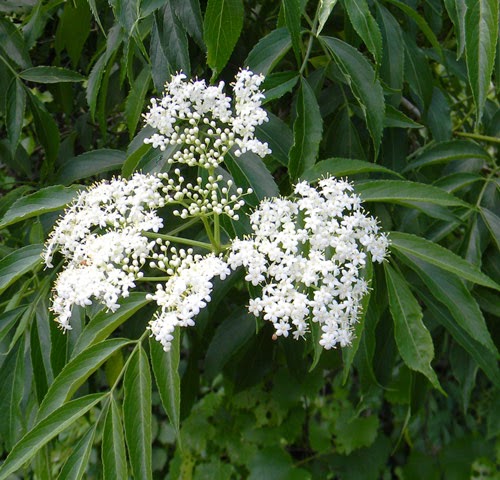Keep your eyes open for patches of elderberries at this time of year. The blooms are a dead giveaway:
As I travel Florida’s turnpike, I see many hundreds of stands of elderberries in Florida, happy oblivious to the fact that they can grow all the way to Canada.
Keep your eyes open now, then you can go back and harvest the excellent medicinal berries in a couple of months.
Places to look: swamps, drainage ditches, forest edges, roadsides. Elderberries like moist soil and will live in half-shade to full sun.
To tell elderberries apart from deadly water hemlock, watch this video.
To discover more of Florida’s wonderful wild edible plants, pick up a copy of this book.
Now get out there and start hunting down elderberries!



7 comments
Hi David,
I know this is an older post, but I was looking for any info you had on harvesting wild elderberries. I've come across loads along a regularly traveled back road and was going to harvest some and make syrup/jam/pie/etc but wanted to know any tips you had for selecting good plants to pick from or processing techniques.
Hi Rachel,
I look for plants with good, full heads of larger berries. Many of our wild ones are little. Also, I've found that the labor involved with removing the elderberries from the stems makes them rather difficult to process in any quantity. I often just put heads in the dehydrator to dry, then eat the dried berries when I'm feeling like I have the flu. If you come up with any good ideas, pass 'em on!
According to UF extension raw elderberries are toxic to people and livestock. They can be cooked and made into jelly, jam, and syrups.
Foragers have been eating them in small amounts for years, myself included. They do make good jelly, though.
Good evening.
Do you have any elderberry plants for sale? My husband absolutely loves elderberry pie and I would like to purchase 4-6 plants to grow in my EarthBoxes.
Thank you.
Dr. Judy Shoemaker
I used to sell them – try Joe Pierce at the Mosswood Farm Store in Micanopy.
Hello! Would you happen to have any idea of whether or not the York and/or nova varieties would do well this far south, specifically Florida/Georgia border? I heard they have the largest and sweetest berries and a heavy yield, but as they originated so far north I figured I’d stick to the ones I know will grow unless someone’s successfully grown those ones here
Comments are closed.